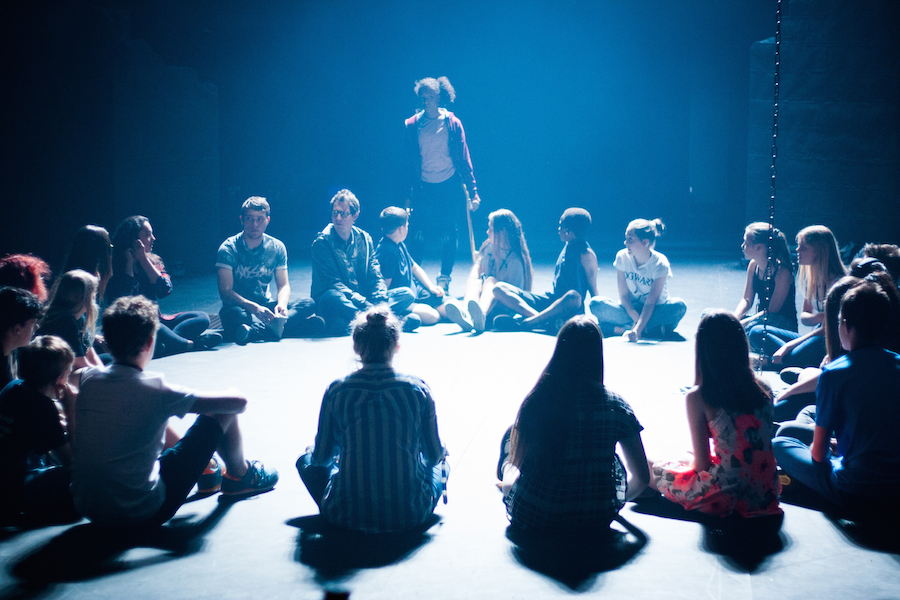There’s a great deal of overlap between the techniques of scoring theatre and games. In my last post, I talked about the practical similarities between these two platforms: of writing music to accompany and synchronise with events that are unlikely to happen at the same time each time they are performed, be that onstage or in-game.
The compositional techniques evolved for both theatre and games are the same, though implemented with different technologies. The main structures to that underpin all the other techniques are stings and loops.
Stings (also known as stingers or one-shots)
Stings are musical elements that play out completely from beginning to end, one time only in any instance. The only control you’ll have is when it starts.
In theatre, this is decided by the sound operator and any programming with an application like QLab.
In a game, there’s a programmed ‘call’ that tells the game engine to make a sound in a certain way whenever an in-game action happens.
I often use stings to start and end musical cues, so they feel ‘complete’.
Loops (also known as infinite loops, or as repeats in music written for musicians to play)
These can be looped or repeated ad infinitum without the listener hearing the join. The sound at the end of the musical (or sound) element ‘matches’ with the sound at the start. These are fantastic for any moments where the duration of the music is fluid because of the on-stage dialogue or action, or the in-game action.
The challenge with loops is that because of the ‘matching’, the very start of the loop will often sound wrong or sudden in an abrupt way, and will draw attention to itself. There are ways of composing – such as having music that features silence at the end of the loop, or creating music that has very little reverb, so the reverb tail from the end of the loop doesn’t need to be added to the beginning of the loop.
Game audio middleware such as Elias or FMOD Studio can automatically take reverb tails and overlap it for the composer (which makes it MUCH easier to create coherent, linear-sounding music), but no such luck in QLab. I can see a marvellous team up of Elias and QLab in the future, if only the worlds of theatre and game music could interact more freely.
Usually with a loop (in my experience with my lush, reverb heavy music…), depending on how I’ve created it, I’ll manually cut and overlap the reverb tail onto the start of the file. If the reverb or other plug-in effects are applied within my DAW (Logic Pro), I’ll have it do a ‘bounce 2nd cycle pass’ in realtime, which does the same job.
Then we get to the fun part: assembling stings and loops to create a time-independant (or time-fluid), linear-sounding piece of music.
This is what we want to happen, somehow, within our chosen software:

… which, when played, will sound like a complete, finished piece of music, with a beginning, middle and end.
This is the part 2 of a 5-part series on how theatre and games music composition techniques are so very similar – having evolved out of the same challenges. In Part 3 I’ll talk about the techniques to assemble loops and stings, along with ‘devamp’ cues in QLab to make a linear-sounding piece.
Subscribe to the RSS feed in a reader like Feedly to make sure you don’t miss the next instalment. Subscribe to the Mailing List to get monthly updates and a digest of all the posts from that month.

